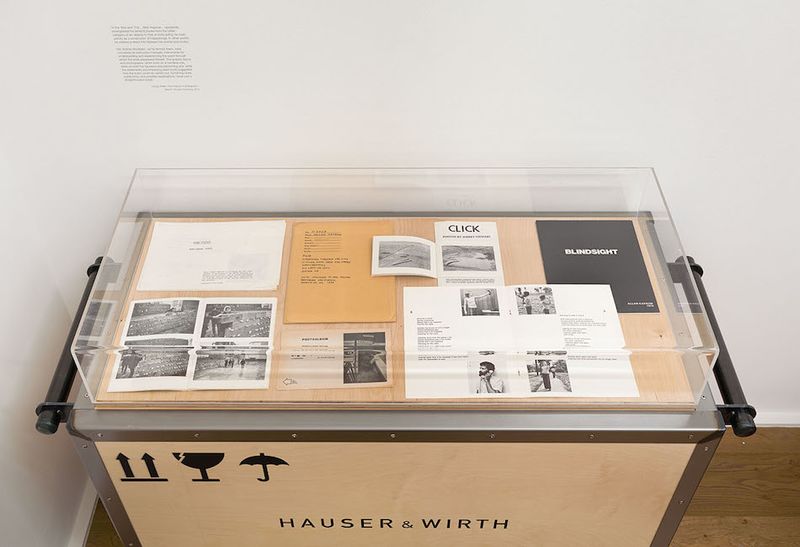
Allan Kaprow Book Lab
11 Dec - 6 Feb 2016
Past
London
About
The Hauser & Wirth Book & Printed Matter Lab focused on Allan Kaprow highlights the relationship between performance and print, displaying a selection of posters accompanying his Happenings as well as activity booklets from the artist. Allan Kaprow publications released by Hauser & Wirth as well as a video of 'Fluids' from 1967 are also on display.
By the late 1950s, American figurative painter Allan Kaprow — formally trained in the era of Abstract Expressionism — began to view the action of Action Painting as far more important than painting itself. With the 1959 work '18 Happenings in 6 Parts,' a series of seemingly random but carefully choreographed activities executed with such friends as artists Robert Rauschenberg and Jasper Johns, he embarked upon a career of intellectually rigorous site-specific, impermanent works that defied commoditization and ultimately gave birth to performance and installation art. The inventor of Happenings and Environments, Kaprow incorporated public participation within and beyond the traditional museum and gallery context. “Life is much more interesting than art,” he wrote. “The line between art and life should be kept as fluid, and perhaps indistinct, as possible."
'In the '60s and '70s... Allan Kaprow... repeatedly downgraded his [artist's] books from the loftier category of art objects to that of tools aiding his main activity as a constructor of Happenings. In other words, he created a direct link between his events and books.
His 'Activity Booklets,' as he termed them, were conceived as instruction manuals, instruments for understanding and experiencing the event through which the artist expressed himself. The graphic layout and photographs, which took on a narrative role, drew on both the figurative and performing arts, while the statements accompanying each book suggested how the event could be carried out, furnishing clues, subtle hints, and possible explanations, never just a straightforward script.' – Giorgio Maffei, 'Allan Kaprow. A Bibliography', Milan/IT: Mousse Publishing, 2010
Hauser & Wirth Publisher's complete backlist of books from 1993 to the present is also available for consultation.
Installation views


About the Artist

With the invention of ‘Happenings’ and ‘Environments’, Allan Kaprow embarked upon a career of intellectually rigorous, site-specific, and timed works that defied commoditization and ultimately gave birth to performance and installation art. His seminal work, ‘18 Happenings in 6 parts,’ 1959, an evening of seemingly random but carefully choreographed activities, required the participation of both the audience and the performers to complete the piece. ‘Life is much more interesting than art,’ Kaprow wrote. ‘The line between art and life should be kept as fluid, and perhaps indistinct, as possible.’
Central to Kaprow’s work was his concept of reinventions. As Kaprow explained, ‘I say reinventions, rather than reconstructions, because the works … differ markedly from their originals. Intentionally so. As I wrote in notes to one of them, they were planned to change each time they were remade. This decision, made in the late 50s, was the polar opposite of the traditional belief that the physical art object—the painting, photo, music composition, etc.—should be fixed in a permanent form.’
Current Exhibitions
1 / 12











